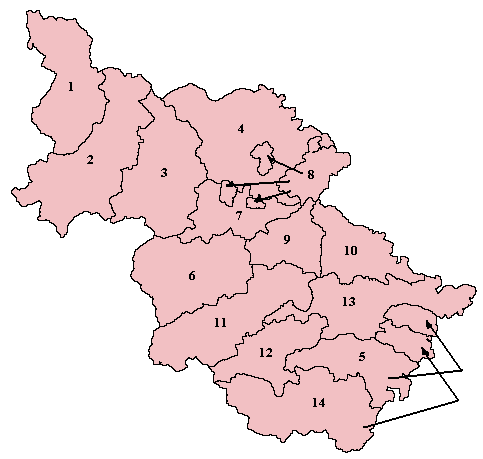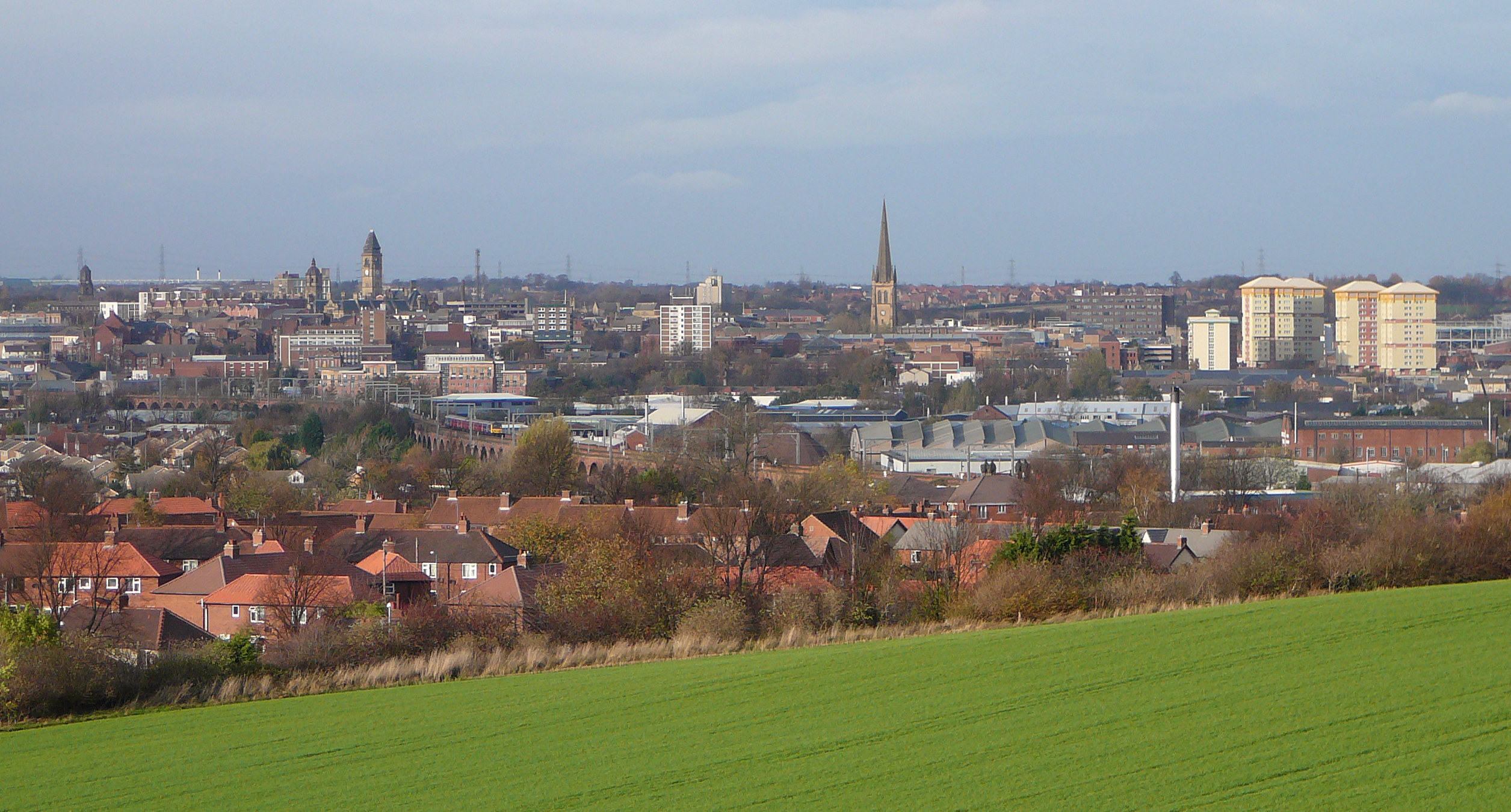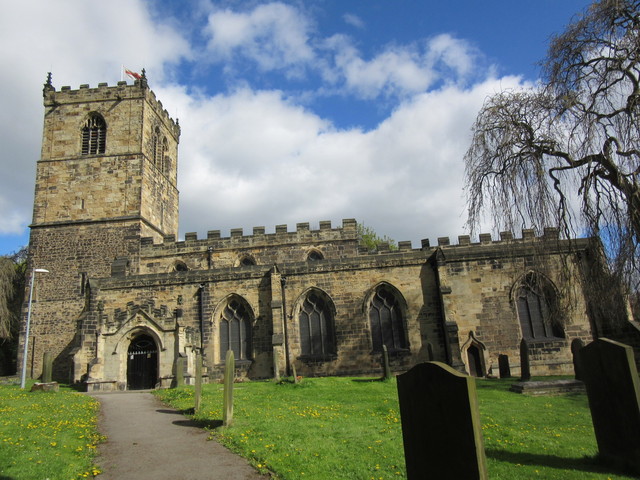|
Staincross (wapentake)
Staincross was a Wapentake (Hundred), which is an administrative division (or ancient district), in the historic county of the West Riding of Yorkshire. It consisted of seven parishes, and included the towns of Barnsley and Penistone History Staincross was named after the village of Staincross and also included the parishes of Cawthorne, Darton, Felkirk, Hemsworth, High Hoyland, Penistone, Royston, Silkstone (including Barnsley) and Tankersley and parts of Darfield. Of the nine wapentakes in the West Riding of Yorkshire, Staincross typically had the lowest population density, which was recorded in 1867 as 27,089. The original meeting place of the wapentake is believed to have been in, or near, to the village of Staincross, similar to the wapentakes at Ewcross and Osgoldcross. The name derives from the Old Norse of ''stein-kross'', literally, ''stone cross''. Originally located in the West Riding of Yorkshire, the majority of area within Staincross Wapentake is now withi ... [...More Info...] [...Related Items...] OR: [Wikipedia] [Google] [Baidu] |
Wapentakes Of The West Riding Of Yorkshire
A hundred is an administrative division that is geographically part of a larger region. It was formerly used in England, Wales, some parts of the United States, Denmark, Southern Schleswig, Sweden, Finland, Norway, the Bishopric of Ösel–Wiek, Curonia, the Ukrainian state of the Cossack Hetmanate and in Cumberland County, New South Wales, Cumberland County in the British Colony of New South Wales. It is still used in other places, including in Australia (in South Australia and the Northern Territory). Other terms for the hundred in English and other languages include ''#wapentake, wapentake'', ''herred'' (Danish and Bokmål, Bokmål Norwegian), ''herad'' (Nynorsk, Nynorsk Norwegian), ''hérað'' (Icelandic), ''härad'' or ''hundare'' (Swedish), ''Harde'' (German), ''hiird'' (North Frisian language, North Frisian), ''satakunta'' or ''kihlakunta'' (Finnish), ''kihelkond'' (Estonian), ''kiligunda'' (Livonian), ''cantref'' (Welsh) and ''sotnia'' (Slavic). In Ireland, a similar subdi ... [...More Info...] [...Related Items...] OR: [Wikipedia] [Google] [Baidu] |
Barnsley
Barnsley () is a market town in South Yorkshire, England. As the main settlement of the Metropolitan Borough of Barnsley and the fourth largest settlement in South Yorkshire. In Barnsley, the population was 96,888 while the wider Borough has seen an increase of 5.8%, from 231,200 in 2011 census to 244,600 in 2021 census. Historically in the West Riding of Yorkshire, it is located between the cities of Sheffield, Manchester, Doncaster, Wakefield, and Leeds. The larger towns of Rotherham and Huddersfield are nearby. Barnsley's former industries include linen, coal mining, glassmaking and textiles. These declined in the 20th century, but Barnsley's culture is rooted in its industrial heritage and it has a tradition of brass bands, originally created as social clubs by its mining communities. The town is near to the M1 motorway and is served by Barnsley Interchange railway station on the Hallam and Penistone Lines. Barnsley has competed in the second tier of English footbal ... [...More Info...] [...Related Items...] OR: [Wikipedia] [Google] [Baidu] |
River Trent
The Trent is the Longest rivers of the United Kingdom, third-longest river in the United Kingdom. Its Source (river or stream), source is in Staffordshire, on the southern edge of Biddulph Moor. It flows through and drains the North Midlands. The river is known for dramatic flooding after storms and spring snowmelt, which in the past often caused the river to change course. The river passes through Stoke-on-Trent, Stone, Staffordshire , Stone, Rugeley, Burton upon Trent and Nottingham before joining the River Ouse, Yorkshire, River Ouse at Trent Falls to form the Humber Estuary, which empties into the North Sea between Kingston upon Hull, Hull in Yorkshire and Immingham in Lincolnshire. The wide Humber estuary has often been described as the boundary between the Midlands and the north of England. Name The name "Trent" is possibly from a Romano-British word meaning "strongly flooding". More specifically, the name may be a contraction of two Romano-British words, ''tros'' (" ... [...More Info...] [...Related Items...] OR: [Wikipedia] [Google] [Baidu] |
River Ouse, Yorkshire
The River Ouse ( ) is a river in North Yorkshire, England. Hydrologically, the river is a continuation of the River Ure, and the combined length of the River Ure and River Ouse makes it, at , the sixth-longest river of the United Kingdom and (including the Ure) the longest to flow entirely in one county. The length of the Ouse alone is about but the total length of the river is disputed. It is a matter of opinion as to whether the River Ouse is formed at the confluence of the River Ure and the much-smaller Ouse Gill Beck at Cuddy Shaw Reach near Linton-on-Ouse, about six miles downstream of the confluence of the River Swale with the River Ure. An alternative opinion is recorded in a publication published in ''The Yorkshire Post'' in a series dated 1891, written and illustrated by Tom Bradley. His description and bird's-eye-view maps—specifically in his account of the River Swale—suggests that the River Ouse starts at the confluence of the Swale and the Ure. His narrative ... [...More Info...] [...Related Items...] OR: [Wikipedia] [Google] [Baidu] |
Adlingfleet
Adlingfleet is a drained, fertile, former marshland village in the East Riding of Yorkshire, England, that forms part of the civil parish of Twin Rivers. It is east-southeast of Goole town centre. Its sea wall along the far north-east is set back from the Ouse estuary leaving the largest single reedbed in England. Geography Adlingfleet is on a minor road set back from the final, southern bank of the Ouse estuary. From Goole the road passes Swinefleet, Reedness, Whitgift and Ousefleet before turning to the south by Blacktoft Sands RSPB reserve to reach the village. The road continues southwards, to Fockerby and Garthorpe, all in similar multiple-drains fields. The boundary between the East Riding of Yorkshire and North Lincolnshire comes to a point south of the village centre. It weaves such as along the eastern edge of the housing, then runs east to reach the Trent estuary. At its north-eastern tip are mud banks, short of Trent Falls, where Trent and the Ouse meet &ndas ... [...More Info...] [...Related Items...] OR: [Wikipedia] [Google] [Baidu] |
West Yorkshire
West Yorkshire is a metropolitan and ceremonial county in the Yorkshire and Humber Region of England. It is an inland and upland county having eastward-draining valleys while taking in the moors of the Pennines. West Yorkshire came into existence as a metropolitan county in 1974 after the reorganisation of the Local Government Act 1972 which saw it formed from a large part of the West Riding of Yorkshire. The county had a recorded population of 2.3 million in the 2011 Census making it the fourth-largest by population in England. The largest towns are Huddersfield, Castleford, Batley, Bingley, Pontefract, Halifax, Brighouse, Keighley, Pudsey, Morley and Dewsbury. The three cities of West Yorkshire are Bradford, Leeds and Wakefield. West Yorkshire consists of five metropolitan boroughs (City of Bradford, Calderdale, Kirklees, City of Leeds and City of Wakefield); it is bordered by the counties of Derbyshire to the south, Greater Manchester to the south-west, Lancash ... [...More Info...] [...Related Items...] OR: [Wikipedia] [Google] [Baidu] |
Wakefield Metropolitan District
The City of Wakefield is a local government district with the status of a city and metropolitan borough in West Yorkshire, England. Wakefield, the largest settlement, is the administrative centre of the district. The population of the City of Wakefield at the 2011 Census was 325,837. The district includes the ''Five Towns'' of Normanton, Pontefract, Featherstone, Castleford and Knottingley. Other towns include Ossett, Horbury, Hemsworth, South Kirkby and Moorthorpe and South Elmsall. The city and district are governed by Wakefield Metropolitan District Council from headquarters in County Hall. In 2010, Wakefield was named as the UK's third most musical city by PRS for Music. Economy The economic and physical condition of several of the former mining towns and villages in Wakefield District have started to improve due to the booming economy of Leeds – and an increase in numbers of commuters to the city from the sub-region – and a recognition of undeveloped assets. For ... [...More Info...] [...Related Items...] OR: [Wikipedia] [Google] [Baidu] |
South Yorkshire
South Yorkshire is a ceremonial and metropolitan county in the Yorkshire and Humber Region of England. The county has four council areas which are the cities of Doncaster and Sheffield as well as the boroughs of Barnsley and Rotherham. In Northern England, it is on the east side of the Pennines. Part of the Peak District national park is in the county. The River Don flows through most of the county, which is landlocked. The county had a population of 1.34 million in 2011. Sheffield largest urban centre in the county, it is the south west of the county. The built-up area around Sheffield and Rotherham, with over half the county's population living within it, is the tenth most populous in the United Kingdom. The majority of the county was formerly governed as part of the county of Yorkshire, the former county remains as a cultural region. The county was created on 1 April 1974, under the Local Government Act 1972. It was created from 32 local government districts of the ... [...More Info...] [...Related Items...] OR: [Wikipedia] [Google] [Baidu] |
Old Norse
Old Norse, Old Nordic, or Old Scandinavian, is a stage of development of North Germanic languages, North Germanic dialects before their final divergence into separate Nordic languages. Old Norse was spoken by inhabitants of Scandinavia and their Viking expansion, overseas settlements and chronologically coincides with the Viking Age, the Christianization of Scandinavia and the consolidation of Scandinavian kingdoms from about the 7th to the 15th centuries. The Proto-Norse language developed into Old Norse by the 8th century, and Old Norse began to develop into the modern North Germanic languages in the mid-to-late 14th century, ending the language phase known as Old Norse. These dates, however, are not absolute, since written Old Norse is found well into the 15th century. Old Norse was divided into three dialects: Old West Norse, ''Old West Norse'' or ''Old West Nordic'' (often referred to as ''Old Norse''), Old East Norse, ''Old East Norse'' or ''Old East Nordic'', and ''Ol ... [...More Info...] [...Related Items...] OR: [Wikipedia] [Google] [Baidu] |
Osgoldcross Wapentake
Osgoldcross was a wapentake of the West Riding of Yorkshire, England. It included the parishes of Adlingfleet, Badsworth, Burghwallis, Campsall, Castleford, Darrington, Kellington, South Kirkby, Owston, Pontefract, Whitgift, Womersley, Ferry Fryston and parts of Featherstone, Snaith and Wragby. The original meeting place of the wapentake was the area which later became Pontefract Market Place.David Hey David G. Hey (18 July 1938 – 14 February 2016) was an English historian, and was an authority on surnames and the local history of Yorkshire. Hey was the president of the British Association for Local History, and was a published author of seve ..., ''Medieval South Yorkshire'' References Wapentakes of the West Riding of Yorkshire {{WestYorkshire-geo-stub ... [...More Info...] [...Related Items...] OR: [Wikipedia] [Google] [Baidu] |
Ewcross
The historical area of Ewecross or Ewcross is a district in the West Riding of Yorkshire, England. It included the parishes of Bentham, Clapham, Horton in Ribblesdale and Sedbergh and parts of Thornton in Lonsdale. Ewcross was split from the Staincliffe and Ewcross wapentake in the nineteenth century. In modern times the name has been used for one of the area deaneries under the Archdeacon of Richmond and Craven in the Anglican Diocese of Leeds. In 2017 it amalgamated with Bowland to become the Deanery of Bowland and Ewecross. Since 1974 the area of the wapentake has been divided between the counties of North Yorkshire and Cumbria Cumbria ( ) is a ceremonial and non-metropolitan county in North West England, bordering Scotland. The county and Cumbria County Council, its local government, came into existence in 1974 after the passage of the Local Government Act 1972. Cumb .... References Wapentakes of the West Riding of Yorkshire Ancient subdivisions of Yorkshire ... [...More Info...] [...Related Items...] OR: [Wikipedia] [Google] [Baidu] |
Darfield, South Yorkshire
Darfield is a village within the Barnsley (borough), Metropolitan Borough of Barnsley, South Yorkshire, England. It is Historic counties of England, historically part of the West Riding of Yorkshire. The village is situated approximately east from Barnsley town centre. Darfield had a population of 8,066 at the 2001 UK Census, increasing to 10,685 at the 2011 Census. History Roman coins have been unearthed in Darfield, and there is evidence to suggest that the village contained Roman Britain, Roman habitation during its history. In Old English language, Saxon, the name "Feld" describes '' 'a large area of pasture land' '', while the term "Dere" refers to the deer which inhabited the forest. When combined, this gives the name ''Derefeld'' which later became ''Darfield''. There are records of an 8th-century church in Darfield, but when the ''Domesday Book'' was written in 1086 there was no mention of it. Darfield remained an insignificant agricultural village for many centuries ... [...More Info...] [...Related Items...] OR: [Wikipedia] [Google] [Baidu] |

.jpg)





